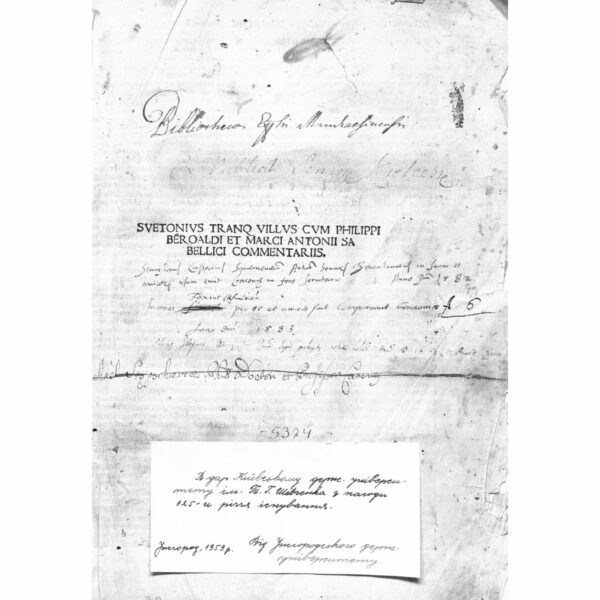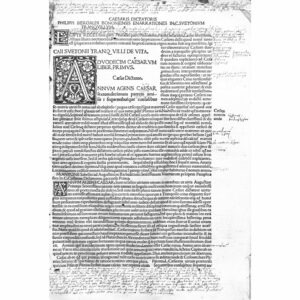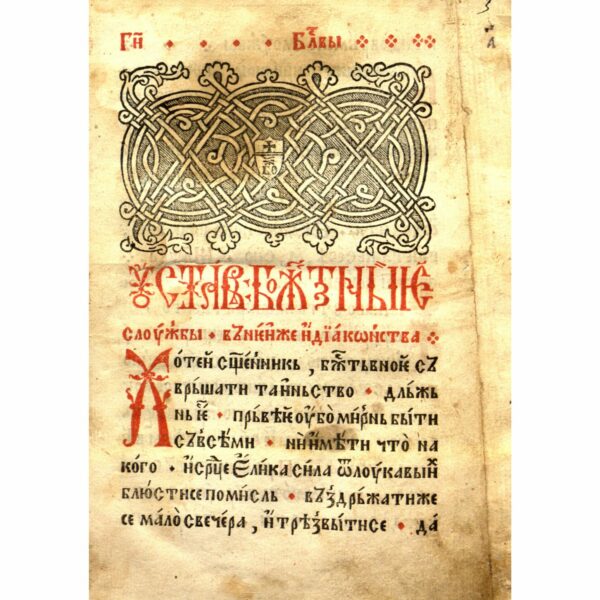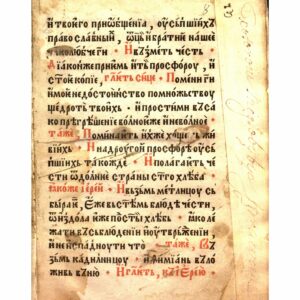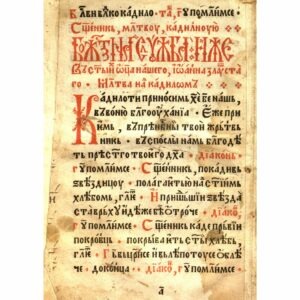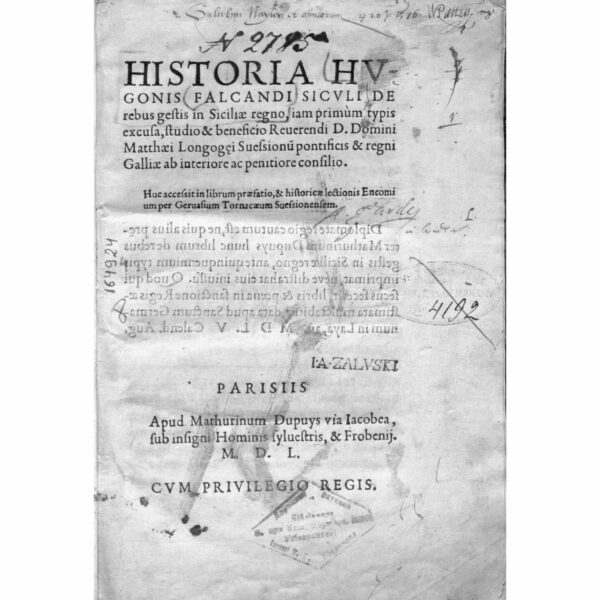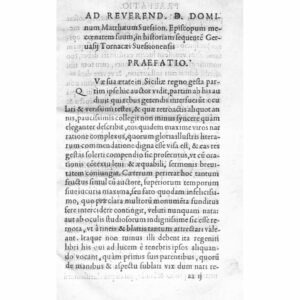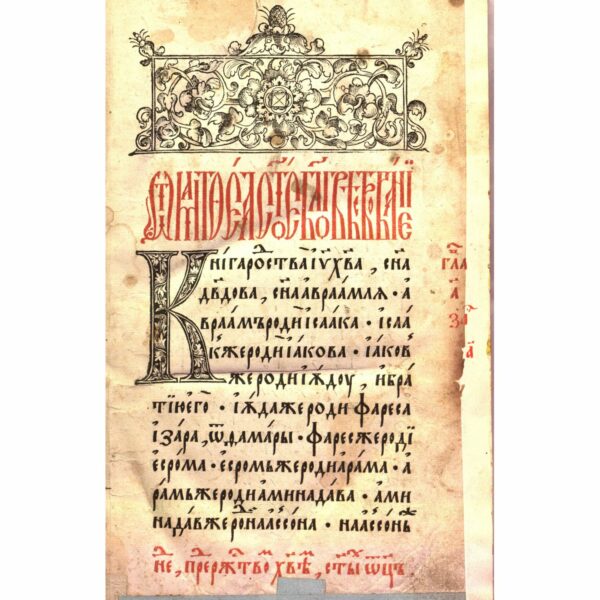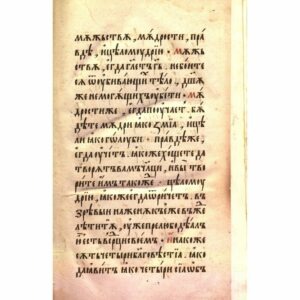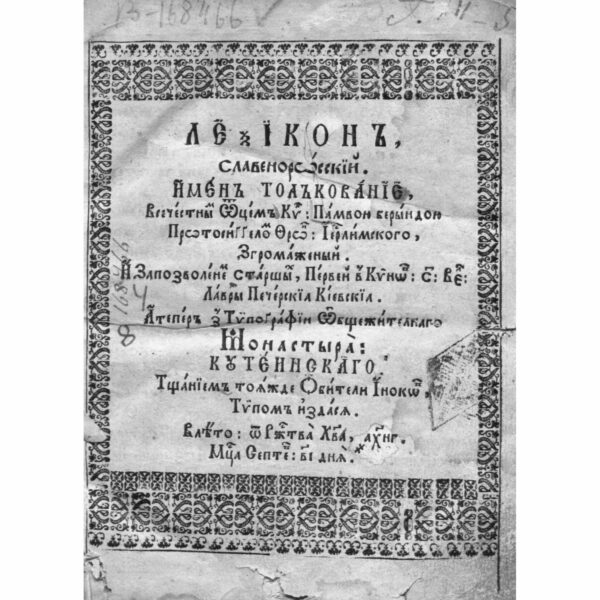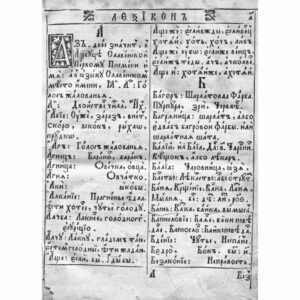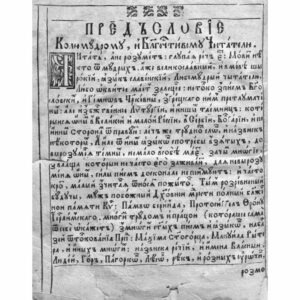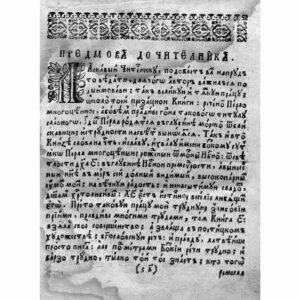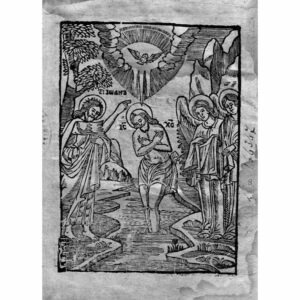Collection of Early Printed, Rare, and Valuable Books
The Collection of Early Printed, Rare, and Valuable Books is one of the most treasured assets of the Maksymovych Scientific Library. The library preserves over 21,000 such editions. A part of the collection consists of early printed books – printed works published from the beginning of printing up to and including the year 1830.
The collection of early prints comprises over 11,000 storage units. The subject matter of these publications covers almost all branches of knowledge: philosophy, religion, theology, history, geography. It reflects the development of European culture, church, and social life of the corresponding historical era. Many of the early prints still require further scholarly study and cataloguing.
About 80% of the early prints were published in foreign languages. Most of them are printed in Latin, Hebrew, Ancient Greek, Old Church Slavonic, as well as Early English, German, French, Italian, and Spanish, which differ significantly from their modern forms. For this reason, the scholarly description of many such books remains incomplete.
The most part of the early printed books fund is made up of books published in Europe in the 16th–17th centuries. The largest number of editions originated from Austria, England, Belgium, Italy, Portugal, and France. Among them are books produced by the famous medieval European printing dynasties of Aldus, Estienne, Elzevier and Plantin.
«The Oldest Item — an Incunabulum»
Year of printing: 1497.
Place: Venice, Italy.
The gem of the early printed collection is an incunabulum printed in 1497 (according to the colophon). The book, printed in Latin, is an edition of Suetonius «The Lives of the Twelve Caesars» with commentaries by Marco Antonio Sabellico and Filippo Beroaldo.
«The Oldest Paleotype»
Year of printing: 1519.
Place: Venice, Italy (printing house of Božidar Vuković).
The collection is adorned with rare early prints of the first half of the 16th century – paleotypes. The oldest dates back to 1519. This rare monument of early printing and the Old Church Slavonic language is the «Service Book» (Sluzhebnik), printed by Hieromonk Pakhomius and published in Venice at the printing house of Božidar Vuković in 1519.
«The History of the Tyrants of Sicily»
Another interesting exhibit is the first edition of «The History of the Tyrants of Sicily» by Hugo Falcandus.
Year of printing: 1550.
Place: Paris, France (printing house of Mathurin Dupuis).
Number of pages: 225.
Binding: cardboard (18th–19th c.).
The book contains numerous marginalia in Latin, as well as some handwritten notes. This narrative covers events of the second half of the 12th century and is an important source of information about the history of the medieval Kingdom of Sicily.
Sopikov’s «Gospel»
«Altar Gospel» (Naprestolnoye Evangelie), published by the printer Petro Mstyslavets. This is an extremely rare edition, described by Sopikov (Part V).
Year: 1575.
Place: Vilnius, Lithuania.
Binding: wooden boards covered with velvet.
Number of pages: 102.
Font size: 10 lines of print (127 mm).
The book is decorated with eleven ornamental initials. A central ornament in the form of a cross has also been preserved. However, the book is missing the first leaf and an engraving depicting the Four Evangelists.
«Slaveno-Russian Lexicon»
Of great value is Pamvo Berynda’s «Slaveno-Russian Lexicon».
Year: 1653.
Place: Kuteino, Belarus.
Number of pages: 324.
Binding: cardboard.
The title page is decorated with a vignette.
Pamvo Berynda was a printer, engraver, philosopher, and writer. From 1616 he worked in the printing house of the Kyiv Pechersk Lavra, where he earned the title of chief typographer. He is the author of the first printed dictionary in Eastern Europe, entitled «Slavonic-Russian Lexicon and Interpretation of Names».
«The Priceless Pearl»
The library also holds one of the rare editions in Old Ukrainian. This is Kyrylo Trankvilion’s «The Priceless Pearl» (Perlo Mnogotsinnoe). The book was intended for pedagogical purposes and is now considered a monument of 17th-century Ukrainian culture.
Place: Mahiliou, Belarus.
Year: 1699 (reprinted in the printing house of Maksym Voshanka).
Number of pages: 476.
Binding: wooden boards covered with leather, with embossing.
The title page depicts the Trinity and eight Saints, printed in two colors: red and black. On the reverse of the title page is the Baptism of Christ.
Recognition of the Collection
In 2021, the Collection of Early Printed, Rare, and Valuable Books of the Maksymovych Scientific Library was included in the State Register of Scientific Objects Constituting the National Heritage of Ukraine by a decision of the Cabinet of Ministers.
The Maksymovych Scientific Library participated in the Cultural Heritage Preservation Project for Future Generations under the European Cultural Convention. Since 2006, part of the early printed editions (about 7,000 works) has been digitized and a digital repository created. Currently, these digitized copies need to be preserved in another format and transferred to a new, more user-friendly digital platform.
War Risks
One of many Russian attacks on October 10, 2022, struck the Scientific Library. The blast wave hit the right wing of the building and, reflecting off other structures, also damaged windows on the opposite side. The rare book collections were stored in the most damaged wing of the library. Fortunately, the editions themselves were not harmed. However, as a result of the missile strike, the collection had to be relocated to a less suitable room for the preservation of such works.
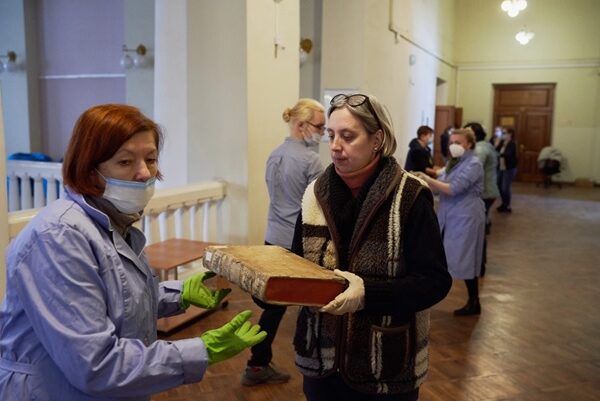
Photo by Valentyn Kuzan. From the article «Dialogue with Maksymovych» on the platform Science at Risk
Department of Rare Books and Manuscripts
In 1983, the Department of Rare Books and Manuscripts was established in the Scientific Library. The staff of this department care for the collection of unique manuscripts and early printed books from the late 15th century to 1830, as well as other rare and valuable editions.
Visitors can also become acquainted with rare books during library tours.
The department is located in Room 14 of the main building at 58 Volodymyrska St.
Tel: 235-70-98, (ext.36-15)
Email:
Dear Readers!
The Maksymovych Scientific Library preserves 3.5 million items that deserve your attention and acquaintance with a wide audience. Therefore, we invite scholars, artists, and students to collaborate in creating thematic virtual exhibitions. You can propose a theme for an exhibition, become its curator, and gain original exposure for your research in a public space, drawing attention to your topic or expertise.
To do so, please fill out the application form: https://forms.gle/wtEbZpgC74vnxwqW9

